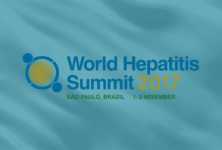Treatment now ‘predictably’ good in trials but what about real world?
BOSTON, November 10, 2016 — With treatment for hepatitis C (HCV) reaching a peak of efficacy, attention is turning to issues of access and outcomes at the annual meeting of the American Association for the Study of Liver Diseases here.
“There are some new drugs and new combinations of drugs” being reported at the meeting, according to the society’s president-elect, Anna Lok, MD, of the University of Michigan Health System in Ann Arbor.
But “at this point treatment is so simple and the success rate is so predictably high that you have to say, how much better can you make it,” Lok told MedPage Today.
She said investigators are now beginning to ask — and report on — the real-world effects of the tsunami of new direct-acting agents against HCV that has dominated the liver meeting for the past few years.
“If HCV treatment is so effective,” she said, “are we really making a difference in clinical outcomes?”
Studies to be presented here look at, for instance, changes in the number of patients placed on liver transplant lists as a result of chronic HCV, as well as cure rates in the VA health system using several of the new combinations.
“We are beginning to see an impact on disease burden,” she said.
HCV is not the only form of viral hepatitis, of course, and the meeting will also have much to offer those interested in hepatitis B (HBV).
Here, though, the research is much less mature than in HCV, Lok said. “There are a lot of advances,” she said, “but they are all very early stage.”
The current approach to chronic HBV, she said, is to block viral replication by putting patients on antiviral therapy “for ever and ever… a treatment that is suppressive not curative.”
Meeting participants can expect to hear about immunological approaches, as well as new targets for antiviral treatment, she said. “Some of them do show promise” but she cautioned that not much is ready for prime time.
Organizers sifted through a “record number of abstracts” to select the slightly more than 2,000 presentations, Lok said. The meeting is expected to draw more than 10,000 participants.
“You never get to see and listen to everything you want,” she said. “There’s just too much.”
To help out, the organizers have slated two wrap-up sessions on Nov. 15, the last day of the meeting. The first is the annual “Hepatitis Debrief,” which for years was completely dominated by HCV, but this year will have a broader remit.
As well, there is a complementary session, the “Clinical Hepatology Debrief,” which will attempt to wrap up non-hepatitis research presented here.
By Michael Smith


 ПОИСК ПО САЙТУ
ПОИСК ПО САЙТУ  поиск по ресурсному центру
поиск по ресурсному центру 



